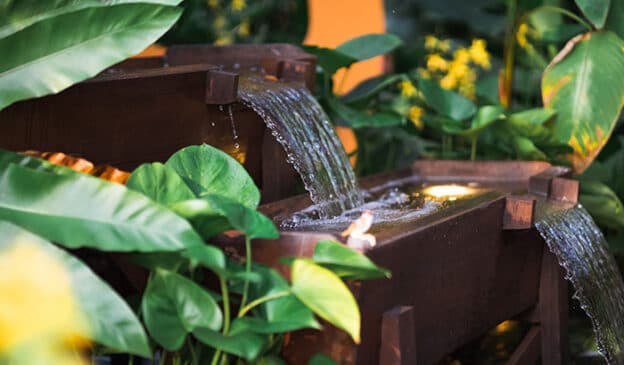Retaining walls are landscaping structures that fight a constant battle against gravity. These walls can serve a functional and aesthetic purpose, and some homeowners use them to increase the amount of usable land in their backyard.
Keep reading to learn more about the benefits of retaining walls.
Design Guidance for Retaining Walls
The purpose of retaining walls is to hold soil behind them. Walls can range from small landscape stone walls that protect your garden, to big soil-retaining projects that can control erosion in your yard when there’s heavy rain. When designing your retaining wall, you’ll need to consider your yard’s soil strength, the ideal location for your wall, calculate wall heights and slopes, and incorporate a draining system.
Stay tuned to learn about the three types of retaining walls so that you can select the perfect one for your home.
1. Gravity Walls
Gravity walls use their own weight to hold soil in place and are made with sturdy materials, such as concrete blocks, stone, and cast-in-place concrete. These walls can lean toward your yard’s soil and contain interlocking edges, which helps them use their mass to resist pressure from behind. Gravity walls are typically 4-feet high, but they can be as tall as ten feet without reinforcement.
2. Cantilevered Walls
Cantilevered retaining walls usually come in the shape of an inverted “T” with reinforced concrete or mortared masonry. They consist of a thin stem and a base slab, which is split into two parts: the toe and heel. Experts use fewer materials to build cantilevered walls compared to gravity walls, and they can be poured on-site or manufactured at a concrete facility. Additionally, you’ll need rigid concrete footing because these walls are usually under 25 inches high.
3. Sheet Pile Walls
Sheet pile retaining walls typically consist of precast concrete, vinyl, steel, or wood planks. A professional can hammer planks into the ground to ensure they can connect to your soil using a groove or tongue. These walls are ideal for soft soils, small spaces, and homes or businesses on waterfronts because they can block beach erosion.
Need Help? LaytonScape is Here for You
Installing a retaining wall isn’t a DIY project you should take on, and it’s best you work with a professional who can measure your yard’s slope and test its soil.
At LaytonScape, our experts have landscaping and general contractor licenses, so we have the training necessary to install retaining walls with structural integrity. Our walls can highlight sections of your yard, adding dimension and an elegant appearance to your garden.
We service Davis, Weber, Summit, and Morgan counties. Request an estimate today.



